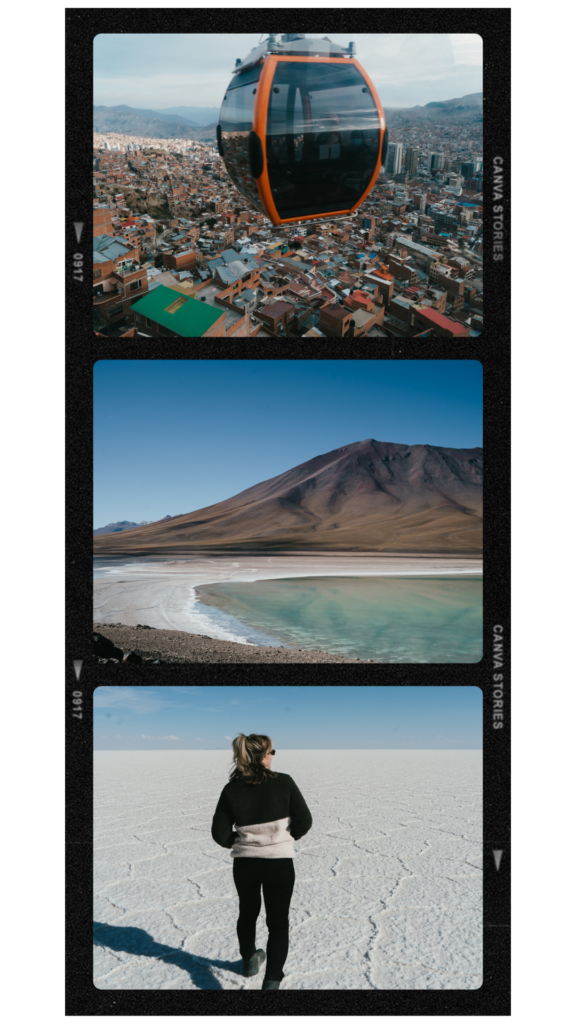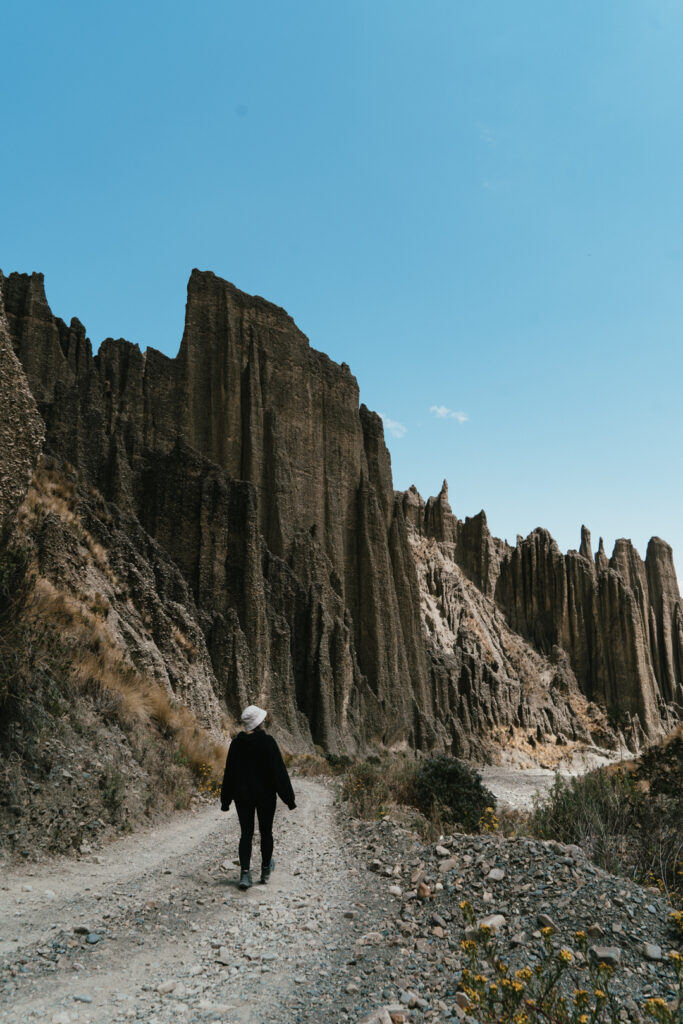Biking Death Road in Bolivia: What You Need to Know
So you want to bike the most dangerous road in Bolivia? Biking Death Road is a bucket list activity for...
*Disclaimer: this page includes affiliate links and I may receive a small commission at no additional cost to you. By using my links you’re merely supporting what I love to do: write this blog! I only recommend products/companies that I use myself.
Additionally, World Nomads provides travel insurance for travelers in over 100 countries. As an affiliate, I receive a fee when you get a quote from World Nomads using this link. I do not represent World Nomads. This is information only and not a recommendation to buy travel insurance.

Bolivia may be one of the most underrated countries to visit in South America, especially when it comes to landscapes, adventure travel and cultural heritage.
It is most known for Salar de Uyuni, the largest salt flats in the world. However, there’s so much more to experience in this diverse country. In La Paz you’ll witness the bustle of the city and can visit the famous witch’s market during one of the best walking tours I’ve ever been on. For those looking to learn some Spanish you can spend some time taking classes in Sucre , the most picturesque city in Bolivia. And for traveler’s who want to explore the Amazon, you can head to Rurrenabaque, the gateway to the rainforests.
Travelers in Bolivia will be inspired, challenged and leave with a better understanding of ancient indigenous cultures.
Bolivia is best for solo travelers who enjoy some adventure, are interested in learning and experiencing new things, and already have a bit of travel experience.
While generally safe to travel through other than following basic safety precautions, Bolivia may prove a bit more difficult to navigate if you don’t speak Spanish and it could be overwhelming for rookie travelers. Additionally, if you’re a U.S. citizen you do need a visa which may be an added challenge for some.
The best way to describe it and something I noticed traveling solo to Bolivia (especially coming from Peru), is that Bolivia may have tourism, but it is not touristic country – meaning it rarely caters to travelers.
Now for me this is not only not a problem but it sounds incredible because I love exploring authentic places. So if you’re like me, add Bolivia to your list! You will not be disappointed.
Note: this advice is applicable for those traveling on their own. However, new solo travelers could also enjoy Bolivia on an organized tour such as this one.


The best time to visit Bolivia depends on your priority during your trip. If you definitely want to see the mirror effect of the Uyuni Salt Flats, you should visit during rainy season which is December – March. However, if you’re visiting multiple destinations in Bolivia and prefer good weather, visit during dry season which is May – October.
The official languages of Bolivia are Spanish and all native indigenous languages, the most widely spoken being Quechua and Aymara.
Tourists should note that English is not widely spoken in Bolivia. It’s estimated that only 4% of the population speaks English, therefore it’s recommended to know basic and common phrases to navigate your travels.
In popular touristic destinations, you will however be able to find some English speaking guides for tours and occasionally hotel/hostel personnel will speak English although it’s not guaranteed and should’t be assumed.
Boliviano
SYMBOL: Bs
ABBREVIATION: BOB
CONVERSION: The currency rate is subject to change but at the time of writing (May 2023) $1 USD ≈ Bs 6.88
Bolivia uses plug types A & C (the same as the U.S. and Europe) and the standard voltage is 230V supply voltage and 50Hz. This is double compared to the U.S. so you should be careful when using hair tools and consider an adapter.
All U.S. citizens need a visa for Bolivia, no matter the purpose of your trip. It’s $160 USD for the tourism visa and requires some paperwork.
Although there is a visa on arrival option, Bolivia immigration is notoriously picky with paperwork which often results in waiting a long time at the border. My suggestion is to save yourself the anxiety and risk of not making it in the country by securing a visa beforehand. You can do so by visiting any Bolivia embassy (if you’re coming from Peru it’s very easy to do in Cusco).
Check the U.S. Embassy in Bolivia website for requirements or speak with someone at a Bolivia embassy since they know best and requirements can change without an update to websites.
To travel to Bolivia, the yellow fever vaccine is listed as requirement. You can check the CDC website and the TravelState.gov information page for more recommendations.
Before traveling anywhere you can check the U.S. Government Travel Advisory for your own knowledge of the status of the country. Personally, I take it with a grain of salt though, and don’t let it completely determine my travel plans but rather to stay advised and take note of emergency numbers.
In general, Bolivia is safe enough to travel to, however you should practice the same safety precautions you would anywhere. Stay especially mindful of petty theft and avoid any involvement of drugs as the possession of drugs in Bolivia is highly penalized and can result in prison time.
Lastly, you should not drink tap water in Bolivia. I recommend bringing a filtered water bottle which reduces plastic waste and makes it possible to drink water from anywhere (especially helpful while trekking). Also be careful with street food. Admittedly, I ate it often because I love trying local food, but most travelers I heard from who also ate at markets got pretty sick. Follow you own judgement, rules of eating street food, and bring some Imodium just in case.
So you want to bike the most dangerous road in Bolivia? Biking Death Road is a bucket list activity for...